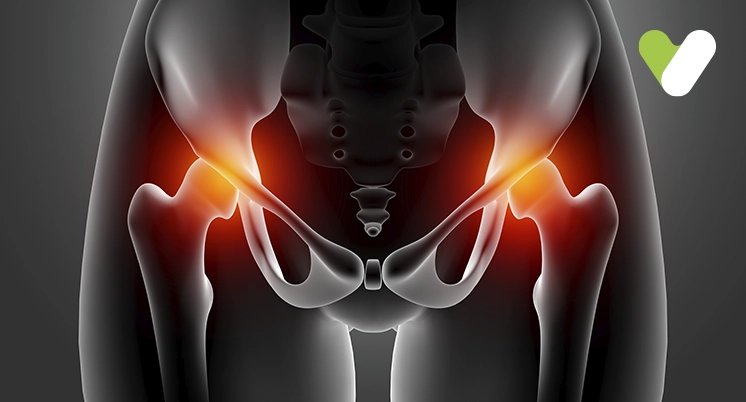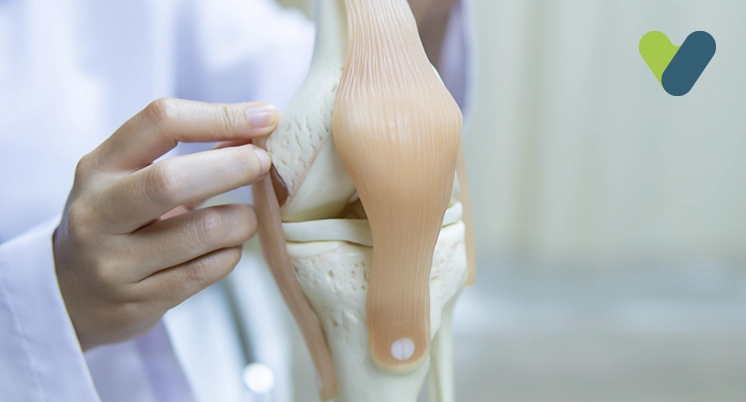Many people develop various ailments as they age, including joint problems. Whether it is a painful knee that is causing you trouble squatting down or a stiff hip that does not allow you to walk down the stairs, you can improve the quality of your life with advanced treatments such as hemiarthroplasty.
Hemiarthroplasty surgery is an efficient method of treating a troubled joint. Your orthopaedic surgeon will recommend a suitable care plan for you based on the health of your joint after thoroughly going through your medical history and analysing other factors. Here, you will gain a clear understanding of what the procedure for hip hemiarthroplasty is, who it is for, and the associated risks.
What is hemiarthroplasty?
The word "hemiarthroplasty" is derived from three Greek words: "hemi" meaning "half," "arthro" meaning "joint," and "plasty" meaning "to form or mould." In simple words, hemiarthroplasty means forming half a joint.
It is not uncommon for people to have one part of their ball-and-socket joint injured or diseased. In such cases, the doctors recommend hemiarthroplasty. They only replace the bad part of the joint with new implants and leave the rest as it is.
There are different joints in the body, including the shoulder, elbow, hip, and knee. However, hemiarthroplasty generally refers to surgery of the hip. Here, we discuss hemiarthroplasty of the hip joint.
Your hip joint is a "ball-in-socket" joint; the thigh bone (femur) has a ball on top of it that fits right into the socket (acetabulum) of the hip bone. This type of joint allows the rotation of your leg inward and outward to a certain degree. People experiencing pain or limited mobility should consider replacing their hip joint. Sometimes, the diagnosis shows no need to replace the entire joint. In such cases, the doctor recommends a hemiarthroplasty. A hemiarthroplasty has many advantages over a total hip arthroplasty, including a shorter surgery time and a lower risk of hip dislocation or instability.
Who needs hemiarthroplasty?
Your doctor will recommend that you undergo hemiarthroplasty if one of the components of the joint, i.e., either the femoral head or the acetabulum, is damaged. For example, if the acetabulum has little to no signs of arthritis damage, you are the right candidate for hemiarthroplasty.
Usually, this surgery is recommended for people who have fractured their hip or have severe arthritis. However, hemiarthroplasty is not the first approach for treating your hip joint. The doctor may try out alternative treatment methods, such as medication, physical therapy, etc., before prescribing hip hemiarthroplasty surgery.
The doctor may also advise you to have a total hip arthroplasty based on the following parameters:
- The health and functionality of your entire hip joint
- Your life expectancy
- Your lifestyle and levels of daily physical activity
- Your overall health
For example, the doctor may recommend hemiarthroplasty to patients who are older and not physically active. On the other hand, the doctor may recommend a total hemiarthroplasty to a younger patient who is more active.
Even with only a little arthritis on one part of the hip joint, the patient who undergoes hemiarthroplasty will have some pain or discomfort. With a total hip arthroplasty, people experience relatively less pain in the long run, have better functionality in the long run, and have better mobility than patients with hemiarthroplasty. There is also a possibility that the better part of the hip joint, which was left intact during the hemiarthroplasty, may need to be replaced later down the line, resulting in two surgeries.
Preparing for hemiarthroplasty
This surgery requires extensive preparation from both parties. The doctor has to determine the size of the implant and prepare a plan for the surgery using X-rays of the hip, and the patient has to ensure optimal health to undergo the surgery.
Determining the correct size of the implant is extremely important for performing a successful hemiarthroplasty, as a bad fit can cause several complications during and after the surgery. The doctor may also recommend that you lose some weight if you are obese and build your immunity leading up to the surgery.
Your orthopaedic surgeon will also ask you to consult your primary care doctor and check for any health problems that could cause trouble during the surgery. You will also need to take certain pre-operative tests (including blood and urine tests) to ensure your readiness for the surgery.
Additionally, any dental procedures should not be performed before the surgery. They are strongly advised against a few months before and after the surgery because bacteria can enter the bloodstream during the dental procedure.
Since hemiarthroplasty may lead to blood loss, your doctor may recommend that you store some of your blood for blood transfusions during or after the surgery in advance. Similar preparation is done for hemiarthroplasty in other joints.
Procedure of the surgery
You will likely be admitted to the hospital on the day of the surgery. Usually, a nurse will start to prepare you for the surgery by changing you into a dressing gown and shaving the side of your hip.
General anaesthesia, antibiotics, and other medications will be administered to you intravenously before the surgery begins to put you to sleep and avoid any infections.
The doctor will then begin by making an incision on the side of the thigh near the hip. They will cut through muscles and tendons to locate your hip joint. They will then dislocate the hip joint manually and use a saw and other equipment to remove the head of the femur or the acetabulum, whichever is faulty.
The next steps involve creating an ideal space for the implants to fit in. The material is then secured with cement and/or screws. After ensuring everything is in place and fits well, they will move your leg to check how well your new hip is functioning. Once this is done, they will start closing the wound following standard procedures and stitching it up. You will then be shifted to the recovery room and kept under observation until you gain consciousness, and all your vitals are stabilised. You may also have a blood transfusion at this point.
Post-surgery care After getting discharged from the hospital, you will go home to rest and recover. After a physical examination, your doctor will share preventive measures and an appropriate exercise regimen to speed up the recovery.
You will need support in activities such as walking, getting in and out of bed, etc. For a few weeks after the surgery, you will be urinating into a bag through the catheter to avoid excess strain on your new hip. Some people may experience reduced appetite, but it is important to eat healthy meals full of macro and micronutrients during this period to ensure quick recovery.
The doctor will ask you to visit them regularly to check on your progress. The stitches will be removed in a week or two after the surgery, and until then you shouldn’t get the wound wet.
Additionally, you should consult your doctor upon noticing any of the following:
- Fever (which could indicate infection)
- Swelling, redness, bleeding, or drainage from the scar
- Foul smelling liquid oozing out of the scar
- Increased pain around the scar
- Unrelated swelling or pain in the lower leg
- Chest pain or shortness of breath (a medical emergency)
Recovery and rehabilitation
A full recovery after hemiarthroplasty surgery can take up to 4 to6 months, depending on the person and how well they follow their surgeon’s guidelines. You will begin physiotherapy soon after the surgery when you are still in the hospital.
A different, more manageable exercise regimen will be shared with you to continue at home. You may also visit a physiotherapy clinic or have a specialist visit your home. The duration of this therapy and your recovery will depend on many factors, including your age and weight.
Some high-impact activities, such as running, will be off-limits for you. Your doctor will also recommend that you avoid falling or putting yourself in a position to be injured, as this can lead to complications and require additional surgery.
Associated risks of hemiarthroplasty
- Hemiarthroplasty has the risk of leading to the following complications: You can have
- blood clots near the wound, whose particles can travel to the heart, lungs, or brain (in rare cases) and cause serious damage.
- You may contract an infection and, in rare cases, require another surgery.
- Your new hip joint may slip and dislocate, causing you extreme pain.
- Overtime (usually in about 12-15 years), your hip joint may become loose and might need to be fixed with another surgery.
Cost of hemiarthroplasty
Hemiarthroplasty costs in India depend on various factors, including the type of joint that needs replacement. The expertise of the surgeon, the location of the hospital, and other parameters also influence the price of the surgery. For example, hip hemiarthroplasty can cost anywhere from INR 2,50,000 to INR 7,00,000.
Outlook Hip hemiarthroplasty is an effective treatment option for people who have a partially diseased or injured hip joint. People may notice some stiffness or pain immediately after the surgery, but it subsides over time. Most patients see a substantial reduction in pain and improved mobility after the surgery.
There are certain care measures that you need to follow to maximise the life of your implants and avoid additional surgery. Extensive or strenuous physical activity is advised against, as there are chances that your hip joint may dislocate or come loose, which can result in excruciating pain.
The pros of hemiarthroplasty outweigh its cons, but not everybody is the right candidate for this type of surgery. You should consult your doctor about any doubts that you may have before finalising a treatment plan; you can also get second opinions from different orthopaedic surgeons to make this life-altering decision.


